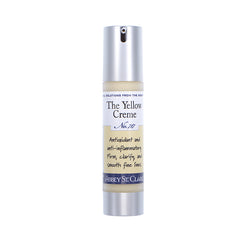Rosacea Skin Care
Rosacea is a skin disorder known for patchy flushing (redness) and inflammation, particularly on the cheeks, nose, forehead, and around the mouth. Rosacea may also include small, red, solid bumps (papules) and pustules on the skin. Rosacea can cause depression in some, but the condition can be controlled. There is no cure for rosacea, but prompt recognition and proper treatment permit people with rosacea to minimize its effects, physically and psychologically. CHARACTERISTICS • Rosacea is a common chronic skin disorder, affecting 30-50% of the population. • Causes are unknown. Enzymatic or bacterial actions are the most probable cause. • Rosacea begins innocently as a blush of the face. • The rosacea region is usually the central third of the face including the nose, but could also include chin, chest, neck, ears, and back. • Rosacea may be mistaken for eczema, blushing, rosy cheeks, sunburn or, usually, acne. • Rosacea causes tiny pimples and red lines to appear on the skin. • Rosacea untreated can cause a bulbous red nose (think W.C. Fields). • Three times more women than men are affected. • Rosacea flushing can be triggered by exposure to temperature extremes, cold wind, strenuous exercise, heat from sunlight, sunburn, stress, anxiety, moving between warm and cold environments (e.g. between heated shops/offices and the outdoors during the winter). Food triggers include alcohol, caffeine, spicy foods, and fruits containing high levels of antioxidants, such as red grapes. TRIGGERS • Alcohol, exercise, extremes in temperatures, and hot or spicy foods. MANAGEMENT • Avoid triggers. • Use mild products and avoid damaging your skin further with harsh washing and irritating topical treatments. • The use of antibacterial and anti-inflammatory botanical essential oils and extracts can help relieve the symptoms of rosacea. Natural plant oils and extracts found to be helpful include helichrysum, rosewood, German chamomile, lavender, green tea extract, pomegranate extract, glycolic acid, and azelaic acid. The Abbey has incorporated these ingredients in its Aniba cleanser, toner, and serum for rosacea and acne. • The use of a green-tinted concealer powder or cream can camouflage some of the intense redness during a flare-up. Apply a light dusting to affected areas, or use as a spot treatment under foundation. • Consulting a physician and prescription antibiotics have proved useful for many.Leave a comment
Comments will be approved before showing up.
Also in Abbey St Clare Blog

The Wheel is Turning. Abbey St. Clare has Closed.
Hello Friends,
The wheel is turning. Transitions are on the horizon. It is with regret that after almost twenty years, Abbey St. Clare is winding down as retirement and a relocation take place in the near future. We will continue taking orders through September 15.

Fix These 5 Hair-Washing Mistakes For Healthier Hair
Is your hair feeling brittle? Scalp dry? Locks not as lustrous as you want them to be? It’s possible you’re damaging your hair with five hair-washing mistakes.
If you follow these guidelines, you will see significant improvement in your hair and scalp health.

Pamper Your Skin and Elevate Your Mood With Essential Oils
Have you ever caught a whiff of cinnamon and felt a boost in your mood instantly? Do you feel calmer and more at ease when using lavender lotion before bed? If you said yes, it’s not just a figment of your imagination!
Ask anybody who uses essential oils regularly, and they’ll probably agree: these natural botanicals can have powerful, positive effects on your mood and overall wellness.


